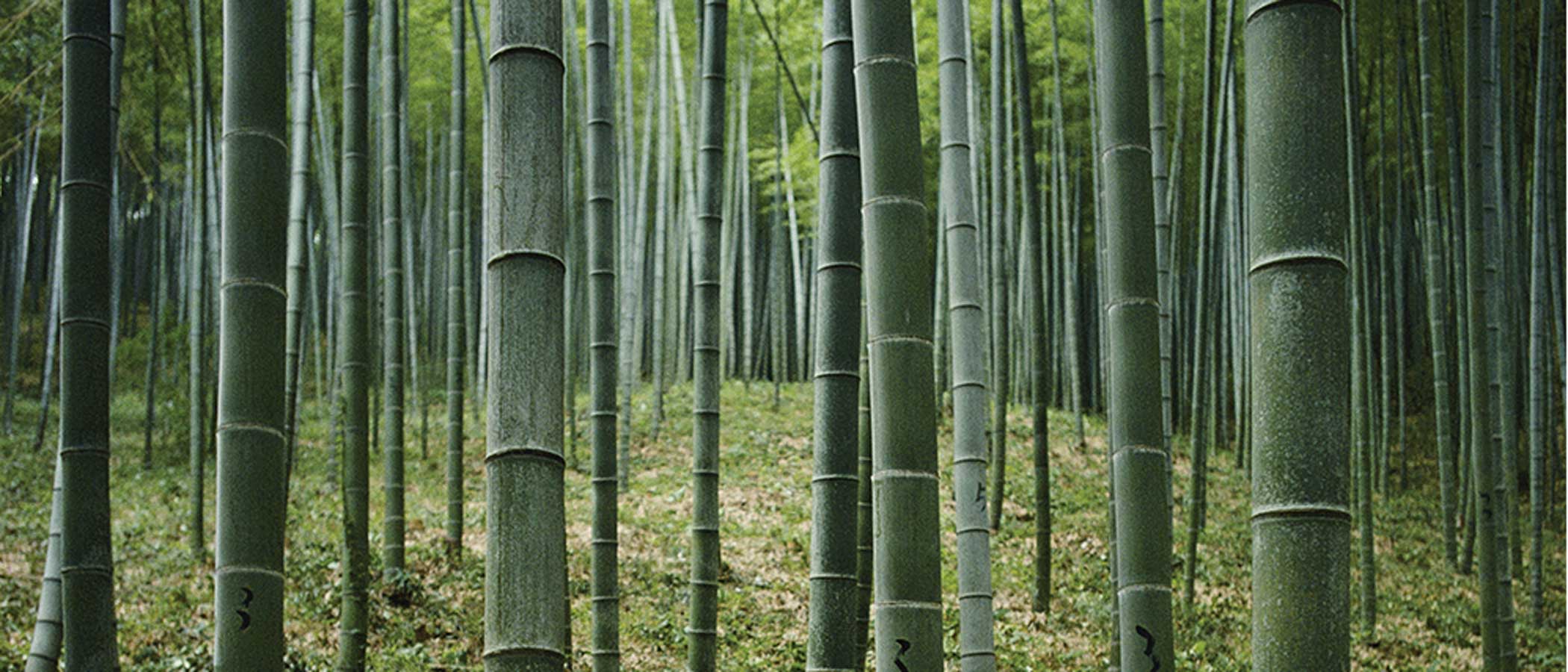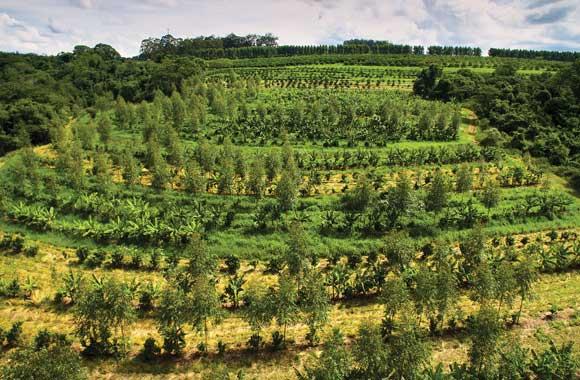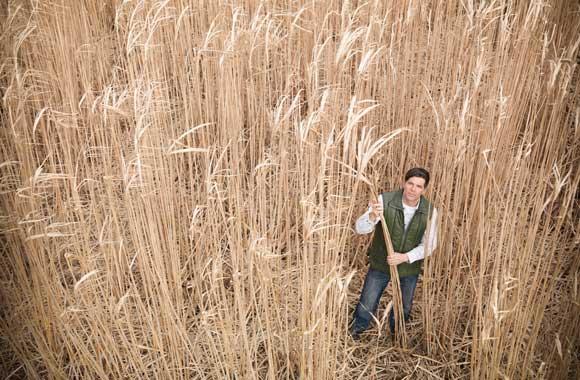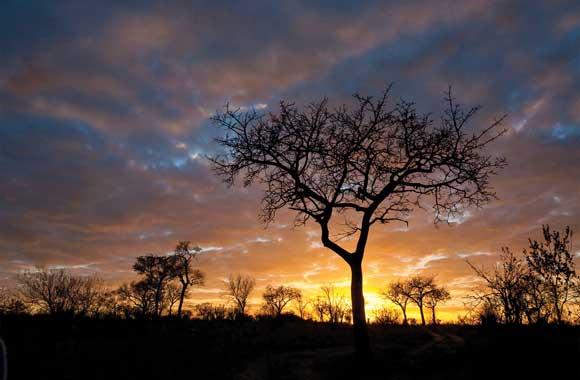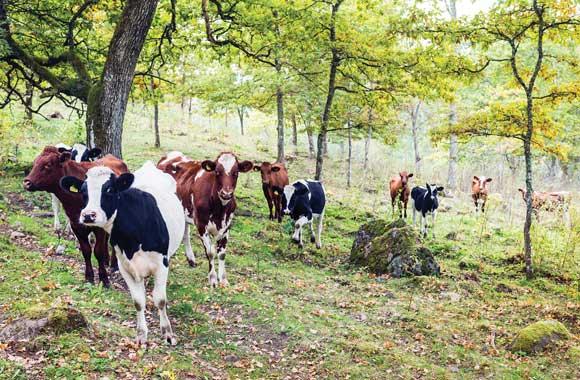Bamboo Production
Bamboo rapidly sequesters carbon in biomass and soil and can thrive on degraded lands. Long-lived bamboo products can store carbon over time.
Reduced/Sequestered
2020–2050
To Implement
Operational Savings
Impact
The baseline for calculating impacts of increased bamboo planting is 33.52 million hectares. We assume that it will be grown on an additional 69.8–174.3 million hectares of degraded forestlands. We calculate that living biomass and long-lived bamboo products can sequester 2.03 metric tons of carbon per hectare per year, resulting in a total of 7.70–19.60 gigatons of carbon dioxide sequestered by 2050. An initial investment of US$63.30–158.98 billion and lifetime operational cost of US$1.33–3.32 trillion could yield a lifetime net profit of US$4.00–10.00 trillion. Substituting bamboo for aluminum, concrete, plastic, or steel can yield significant avoided emissions; however, these additional benefits are not included.
Introduction
Project Drawdown’s Bamboo Production solution sequesters carbon in soils, biomass, and long-lived bamboo products through the large-scale cultivation of bamboo production on degraded land for timber or other uses. This solution replaces other uses of degraded lands, such as grassland, cropland, and forest. However, for the purposes of this analysis, we only allocated this solution on degraded forestland.
Bamboo is a fast-growing, woody member of the grass family. It thrives in a wide range of environmental conditions and sequesters carbon at a rate greater than or equal to that of many tree species. Bamboo matures much faster than trees and sprouts via rhizomes, so it does not require replanting. In fact, harvesting can stimulate the growth of new shoots.
Bamboo has more than 1,500 documented uses, including building materials, paper, furniture, food, fodder, and charcoal. Though there are concerns about the invasive potential of bamboo, species are native to Asia, Latin America, North America, and Africa. Many do not run and flower extremely rarely, making invasion unlikely.
Bamboo production is a unique subtype of tree plantation worthy of consideration on its own substantial merits.
Methodology
Total Land Area
Current adoption is defined as the amount of functional demand supplied by bamboo production in 2018. Current adoption is estimated at 33.5 million hectares (FAO, 2010).
To evaluate the extent to which a Food, Agriculture, and Land Use sector solution can reduce greenhouse gas emissions and sequester carbon, we need to identify the total land area available for that solution. To avoid double counting, we use an integration model that allocates land area among all of the sector’s solutions. This involves two steps. First, we classify the global land area into agro-ecological zones (AEZs) based on the land cover, soil quality, and slope and assign AEZs to different thermal moisture regimes. We then classify the AEZs into “degraded” and “nondegraded.” Second, we allocate the solutions to AEZs, with the solution most suited to a given AEZ or sets of AEZs assigned first, followed by the second-most-suited solution, and so on. Because it’s hard to predict future changes, we assume the total land area remains constant. Total land areas represent both the implementation and functional unit.
The total area deemed suitable for bamboo production was 364 million hectares and was composed of degraded forest.
Adoption Scenarios
We used historic regional growth rates from FAO (2010) and projections from Song et al. (2013) to develop adoption scenarios.
We calculated impacts of increased adoption of bamboo production from 2020 to 2050 by comparing two growth scenarios with a reference scenario in which the market share was fixed at current levels.
- Scenario 1: Bamboo production is adopted on 103.3 million hectares of degraded land (28 percent of the available land area).
- Scenario 2: Bamboo production is adopted on 207.83 million hectares of degraded land (57.13 percent of the available land area).
Sequestration Model
Bamboo production can sequester 2.03 metric tons of carbon per hectare per year, based on 12 data points from four sources. This value includes carbon sequestered in long-lived products from harvested bamboo. Because the productive lifespan of a bamboo planting is 75–100 years, we didn’t model emissions from replanting.
Financial Model
All monetary values are presented in 2014 US$.
The first cost of bamboo production was US$915.36 per hectare, based on meta-analysis of 10 data points from six sources. The net profit margin was US$717.06 per hectare per year, based on six data points from five sources. The operational cost was US$238.07 per hectare per year based on nine data points. We didn’t estimate financials for the practice being replaced because degraded forestland does not provide an economic benefit under the conventional practice.
Integration
Project Drawdown’s Agro-Ecological Zone model allocates current and projected adoption of solutions to forest, grassland, rainfed cropland, and irrigated cropland. Adoption of bamboo production was constrained by our higher prioritization of food production and forest restoration.
Results
Scenario 1 reduces greenhouse gases by 7.70 gigatons of carbon dioxide equivalent by 2050. The net first cost to implement is US$63.30 billion, and the lifetime operational cost is US$1.33 trillion. The lifetime net profit is US$4.00 trillion.
Scenario 2 reduces greenhouse gases by 19.60 gigatons of carbon dioxide equivalent by 2050. The net first cost to implement is US$158.98 billion, and the lifetime operational cost is US$3.32 trillion. Lifetime net profit is US$10.0 trillion.
Discussion
Benchmarks
Song et al. (2017) estimated current carbon sequestration in terrestrial bamboo biomes at 0.16 ± 0.9 gigatons of carbon dioxide equivalent per year. In comparison, our model indicated sequestration rates of 0.21–0.57 gigatons of carbon dioxide equivalent per year in 2030.
While few benchmarks for the greenhouse gas mitigation impact of bamboo production are available, the practice can be considered a form of afforestation. Combining the Bamboo Production solution with our other woody crop solutions, Tree Plantations (on Degraded Land) and Perennial Staple Crops, gave an emissions reduction in 2030 of 1.33–2.45 gigatons of carbon dioxide equivalent greenhouse gas emissions per year. This is still somewhat lower than the Intergovernmental Panel on Climate Change (IPCC)’s estimate of 4.0 gigatons for 2030 for afforestation, assuming a price of US$100 per metric ton (Smith, 2007). This difference is because we don’t model a price on carbon, and we prioritize agroforestry and other food-producing, high-carbon-impact land uses.
Limitations
The paucity of reported soil sequestration rates in the literature is a key limitation. Our results also can be made more accurate if life-cycle analysis of the full bamboo production value chain becomes available.
Conclusions
Bamboo is already cultivated on 37 million hectares and represents an important high-carbon land use. It produces products of critical importance and can help reduce pressure on intact forests. It has been somewhat neglected as a mitigation strategy, and we hope to help bring this multipurpose mitigation solution the attention it deserves.
References
FAO. 2010. Global forest resources assessment 2015: How are the world’s forests changing? Food and Agriculture Organization of the United Nations.
Smith, P. D., Z. Martino, D Cai, and H Gwary. 2007. “Agriculture.” In Climate Change 2007: Mitigation of Climate Change: Contribution of Working Group III to the Fourth Assessment Report of the Intergovernmental Panel on Climate Change, edited by Bert Metz. Cambridge ; New York: Cambridge University Press. http://www.ipcc.ch/pdf/assessment-report/ar4/wg3/ar4-wg3-chapter8.pdf.
Song, Z., Liu, H., Li, B., & Yang, X. (2013). The production of phytolith-occluded carbon in China’s forests: implications to biogeochemical carbon sequestration. Global Change Biology, 19(9), 2907–2915. https://doi.org/10.1111/gcb.12275
Song, Z., Liu, H., Strömberg, C. A. E., Yang, X., & Zhang, X. (2017). Phytolith carbon sequestration in global terrestrial biomes. Science of The Total Environment, 603–604, 502– 509. https://doi.org/10.1016/j.scitotenv.2017.06.107
What You Can Do
Consider using bamboo products in your next home improvement project.
Share the somewhat surprising climate benefit of bamboo with others by writing a letter to a magazine editor or adding a comment to an online article.
- Expand your knowledge by exploring another Drawdown solution.
Co-benefits
By sequestering carbon this solution can improve air and water quality, reduce risks of extreme climate events, and enhance mental health.
Improved air and water quality contribute to reduced respiratory and gastrointestinal illness.

